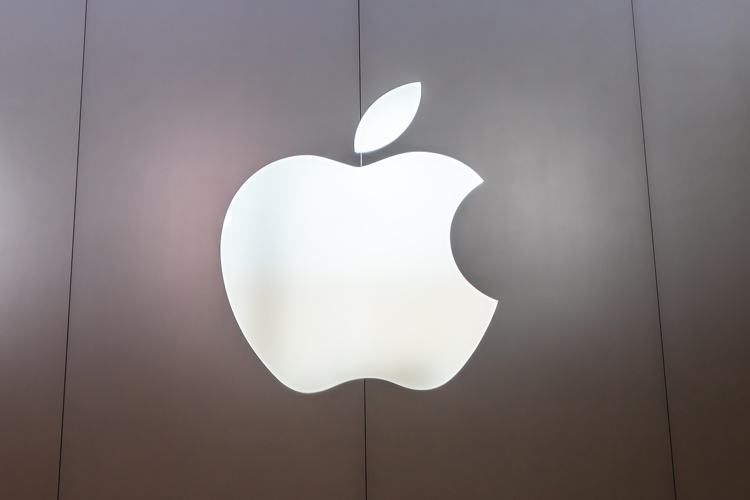You may think of it as a crisp, tasty fall fruit, but an apple is more than that in legal terms. When you see the Apple name and logo, do you think of Apple Corps, the music company, or Apple Inc., the technology company? Both companies use the same name and a similar logo, and that has led to some of the longest running trademark battles in legal history. These lawsuits went on for decades and invoked some interesting legal doctrines along the way.

Two Apples
Who are these two Apples? One represents London in the swinging 60s, and the other represents the personal computer revolution.
The Beatles founded Apple Corps in 1968. Its main division was Apple Records, but there was also an Apple Publishing and an Apple Boutique. The company released albums by several singers. Today, it is a multimedia corporation and owns the official copyright of the name “Beatles.” Apple Corps has long used a green apple in its logos and marketing. Each record it produced, for instance, featured a picture of an apple sliced in half on the label.
Inspired by a Painting
Paul McCartney once explained that he got the inspiration for the name from a Rene Magritte painting of a green apple. The band wanted to name their new company Apple Core, but that name was taken. They settled on Apple Corps, which had the same pronunciation.
Steve Jobs and Steve Wozniak founded Apple Company in 1976. Wozniak and Jobs were college dropouts who wanted to change the way people used computers. Known simply as Apple today, the company introduced the first user-friendly desktop computers and the first cell phone. The founders chose a logo that depicted an apple with a bite taken out of it.
Sheer Coincidence
Why did they use an apple? The founders of Apple have said it came from the story of famous physicist Isaac Newton. Legend has it that Newton developed the concept of gravity when an apple fell out of a tree and hit him in the head.
Over the years, Apple’s popularity has led to many theories about what the apple meant. Some people have suggested that the bite was a play on the computer term “byte,” and others have suggested it was a reference to Alan Turing, the mathematician and computer genius who committed suicide by eating a poisoned apple.
In a 2018 interview with Forbes, however, graphic designer Rob Janoff said he “wished” they had been clever enough to come up with those ideas. According to him, it was all a coincidence.
Read more on the Apple logo.
First Fight
In 1978, Apple Corps took notice of the brash new company that was using its name and symbol. It filed a lawsuit alleging trademark infringement. Three years later, the lawsuit was settled for $80,000. The 1981 settlement contained two stipulations: Apple Company could never have anything to do with the music business, and Apple Corps could never have anything to do with the computer business. Both sides agreed, and the matter was settled for now.
The initial Apple vs. Apple lawsuit rested on a legal concept known as the Aunt Jemima Doctrine. This goes back to a 1915 court decision. In that decision, a judge said two companies with similar names and logos could confuse customers because the two companies made similar products. In that lawsuit, the argument was between two companies that made breakfast foods.
The decision has also been invoked, however, to argue that there is no confusion if the two companies don’t make the same products. That was the argument Apple Company’s lawyers used.
New Lawsuit
Both sides seemed happy after the decision, but there were more battles ahead. In 1991, Apple Corps fired again, alleging that Apple Computer had broken the terms of the settlement by entering the music business. The lawsuit said Apple’s new computers and CD-ROM drives were all capable of creating and playing music.
In this case, the courts sided with Apple Corps and ordered Apple Computer to pay $26.5 million. Under this agreement, Apple Company agreed that it would limit itself to digital music. It would not package, sell or distribute music CDs, albums or any “creative works whose principal content is music.”
Apple Goes Digital
In 2000, Apple Company began working on an MP3 player and an online music store. In 2001, it released the iPod. The next year, it launched the iTunes music store.
Apple Corps did not ignore this move. In 2006, it sued Apple Company for breach of contract. Apple Corps said iTunes and the music store violated the terms of the two agreements. It also alleged trademark dilution over the use of the name Apple to market music products.
Apple Corps said digital music should be considered a physical music product. Apple Company responded that digital music was not part of the original agreement. It also said Apple Corps didn’t have the right to add new items just because technology had advanced since the original agreement.
Final Decision and a New Agreement
A high court judge in London agreed with Apple Company. The judge ruled that Apple could continue to sell its digital music products under the name Apple.
In 2007, both sides reached another agreement over the use of the name Apple. Apple Company, now known as Apple Inc., owns the use of the name Apple and has licensed the use of the trademark to Apple Corps.
Moron In a Hurry
The Apple vs. Apple litigation went on for decades, and it invoked two interesting legal doctrines. One was the Aunt Jemima doctrine, and another was the “moron in a hurry” legal test.
The phrase describes a hypothetical person who might be confused by two similar names. The phrase was first used in the 1978 British lawsuit Morning Star Cooperative Society vs. Express Newspapers, in which the publisher of the Morning Star tried to stop another publisher from producing a tabloid titled the Daily Star. The judge in that case ruled that, “If one puts the two papers side by side, I for myself would find that the two papers are so different in every way that only a moron in a hurry would be misled.”
Similarly, Apple Company argued, “Even a moron in a hurry could not be mistaken about” the difference between iTunes and an Apple record.
No More Bites
The Apple vs. Apple lawsuits show the value of a trademark. Neither company was willing to give up its iconic name or image. The battle finally ended in 2006 with two companies that have the same name. Since then, Apple Inc. has grown into the world’s largest technology company, and Apple Corps remains a major media empire. In 2010, the Beatles released their recordings on iTunes for the first time.

